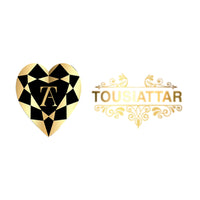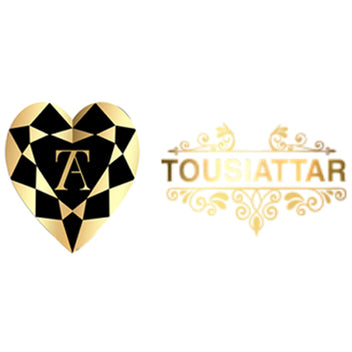The ‘’4 C's’’ Diamond Article
The TousiAttar Jewelers Diamond Education Guide is Designed to Give you the Tools and Knowledge You Need to Properly Appraise Diamond Quality and Value with Confidence. Selecting a Diamond Does Not Have to Be an Inconvenient Experience!!
Every Diamond is Inimitable, and Various Characteristics of Diamonds are Graded and Categorized by the Diamond Industry. Focus on Those Factors Most Important to You, and Select a Diamond that Satisfies your Characteristic Standards for Beauty and Value.
The Tousi Attar Jewelers Diamond Education Guide is Designed to Give you the Tools and Knowledge You Need to Properly Appraise Diamond Quality and Value with Confidence. Selecting a Diamond Does Not Have to Be an Inconvenient Experience!!
Every Diamond is Inimitable, and Various Characteristics of Diamonds are Graded and Categorized by the Diamond Industry. Focus on Those Factors Most Important to You, and Select a Diamond that Satisfies your Characteristic Standards for Beauty and Value.
- Cut
- Clarity
- Color
- Carat weight
Those are the Criteria Standards Jewelers use When Grading Diamonds, and Those’re the Ones You'll Need to Understand to Buy the Right Diamond for You.
1-Diamond Cut
- Cut is Probably the Most Complicated, and Most Challenging Work, of the ‘four Cs’ to Understand. The Brilliance and Sparkle of a Diamond Depends Heavily on its Cut.
Factors of The Specification a Diamond's Cut Quality:
- Polish: The Purity and Luster of the Diamond's Face. An Excellent Diamond Polish is a Diamond Which Has Very Few or no Scratches
- Proportions: Diamond's Parts and Facets of Sizes and Angles. To Optimally Catch Light and Reflect it back, a Diamond's Pavilion Must Have Exact Angles and Depth. If the Angle of the Pavilion is too Shallow or too Deep, light will leak out, Creating Dark and dull ". The Crown Angle is Also Extremely Important Since This Affects the way that light Enters and Exits the Diamond.
- Symmetry: The Attention of The Cut Design, Especially the Facets
There are Four Grades of Diamond Cut: Ideal, Very Good, Good and Poor.
If You Compare Two Diamonds of Different Cuts Grades, You Will see That the Higher Cut Grade Has Significantly More Sparkle. Of the 4 Cs, Cut is Generally Recognized as the Most Important, since it Has the Greatest Impact on a Diamond’s Appearance and Quality.
Ideal
Tremendous Sparkle. Excellent Polish and Symmetry.
Very Good
Lots of Sparkle. Great Polish and Symmetry.
Good
A Good Amount of Sparkle. Sufficient Polish and Symmetry.
Poor
Will Not Sparkle Very Much. Unsatisfactory Polish and Symmetry.
2-Diamond Color
- Colorless Diamonds are the Second Most Important of the 4Cs Because It’s What the Eye Notices Next After Sparkle.
Factors of The Specification a Diamond's Color Quality:
White or colorless diamonds actually occur in a range of shades – from truly colorless to off-white. They are graded on a color scale from D (colorless) to Z. The differences between one shade and the next are very subtle, so grading is done under controlled lighting, using a master diamond sample set for comparison and accuracy. Natural diamonds also occur in shades of blue, green, yellow-orange, pink, red and even black. Known as 'colored fancies', these gems are extremely rare and valuable. They are graded according to the intensity of their color.
There are Four Grades of Diamond Color:
- D (Colorless)
Highest-Quality Color Grade a Diamond Can Receive. A D-Color Diamond is Acutely Rare and Emits Unique Brilliance
- E (Colorless)
Possess Very Minute Effect of Color. Also, a Rarity, an E-color Rated Diamond Emits a High level of Brilliance and Sparkle.
- F (Colorless)
This is a High-Quality Color Grade. Minute Effect of Color Can Only be Detected by a Trained Gemologist, H (Near Colorless)
Contains Noticeable Color Only When Compared to Higher Color Grades. Appearing Colorless to the Untrained Eye, a G or H Color Diamond Provides an Excellent Value.
- I, J (Near Colorless)
Contains Slightly Detectable Color. An I-Color or J-Color Diamond is An Excellent Value, as it Typically Appears Colorless to the Untrained Eye.
- K, L, M (Faint Yellow)
Even with the Presence of Color, These Grades of Diamonds Can Emit Fire and Beauty. Faint Color is Noticeable.
3- Diamond Clarity
Diamond Clarity refers to how many ‘inclusions’ there are in a diamond, The clarity grade is a reminder that, after all, a diamond is a thing of nature — and like most natural things, it's rarely perfect. . Like any rock or mineral, diamonds often have flaws, known as inclusions and blemishes.
The scale ranges from flawless to heavily included:
- F (flawless inside and out)
- IF (internally flawless, which means there are blemishes on the surface but not inside the diamond)
- VVS1 and VVS2 (very, very slightly included – two levels)
- VS1 and VS2 (very slightly included – two levels)
- SI1 and SI2 (slightly included – two levels)
- I1, I2 and I3 (included – three levels)
4- Diamond Carat
- Carat is the most misunderstood of the 4Cs. It refers to a diamond's weight, not its size.
A carat is the unit of weight by which a diamond is measured. Because large diamonds are found less commonly than small diamonds, one carat is equal to 200 milligrams. The term is derived from the word ‘carob’. Carob seeds were used as a reference for diamond weight in the ancient world. Very small differences in carat weight can sometimes result in a disproportionate spread in cost. To the eye, the difference between a 1.1-carat and 1.2-carat diamond (1 1/10 carat and 1 1/5 carat diamond) might be impossible to discern, but the cost difference between those carat weights can be thousands of dollars for otherwise identical diamonds.

